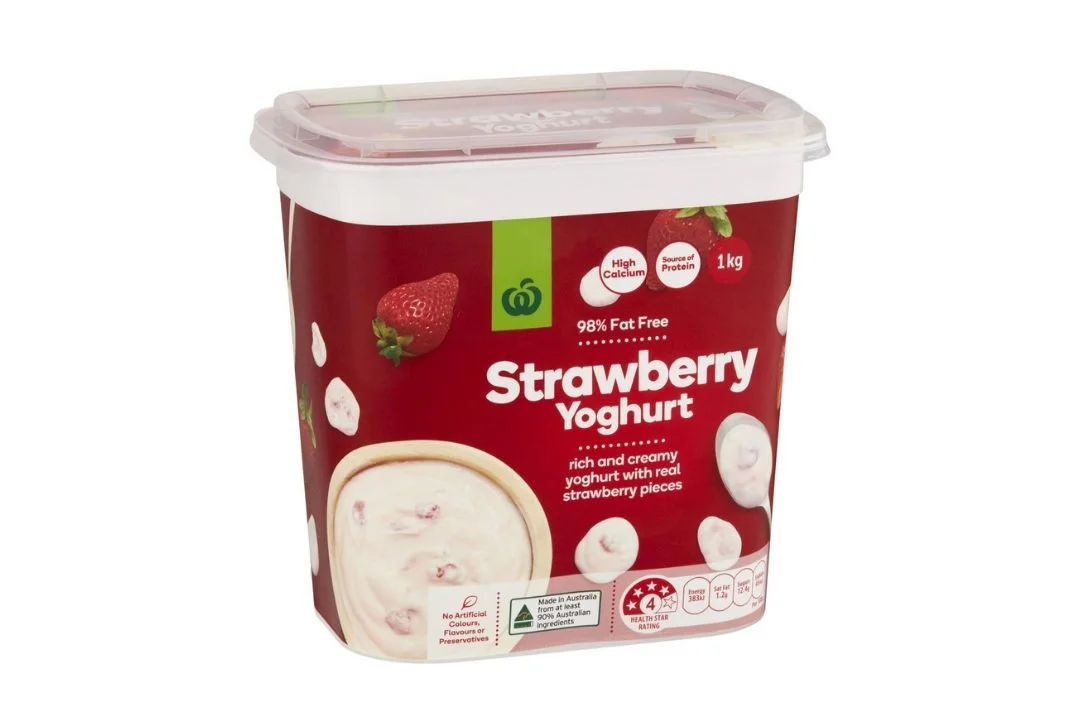Blood sugar spikers.
To avoid high insulin, we need to know which foods spike blood sugar levels. These foods can be grouped into the following categories:
Sugar
Refined carbohydrates
Ultra-processed food
High sugar fruits, dried fruit and juice
Starchy vegetables
Low fat and sugar free products
Sugar
Not surprisingly, eating foods which contain sugar, can spike blood sugar levels. This includes sugar from refined sources like lollies, cookies and chocolate, but also includes sugar from unrefined natural sources including honey and maple syrup.
Sugar from honey spikes blood sugar just like lollies.
If you want to improve your health, it’s best to reduce all types of sugar. Food can be sweetened with small amounts of whole fruit, or natural sweeteners like stevia or monk fruit which don’t impact blood sugar or insulin (although regularly eating sweet food, often increases sugar cravings).
70% of packaged food has added sugar.
And there are more than 100 different names for it…
Refined Carbohydrates
Did you know that carbohydrates are made of sugar? Carbs are long chains of sugar molecules which are broken down to sugar in the body. Eating carbohydrates raises blood sugar levels.
Carbohydrates are made of sugar.
Refined carbs, like flour, bread, pasta and rice (white and brown), are quickly broken down to large amounts of sugar, and have little nutritional benefit.
Refined, factory-made carbs usually come in boxes or packets (also think cereal, crackers, chips and popcorn). There will usually be health claims on the packaging, such as “high in fibre”, “wholegrains”, “source of vitamins”, “low fat/low calorie/natural” etc. If a packaged food is being marketed as healthy, it’s usually best avoided.
Choosing to limit these foods helps to stabilise blood sugar and lower insulin.
We don’t have to eat carbohydrates.
Unlike fat and protein, the body can make all the sugar it needs.
Ultra-Processed Food
Unprocessed food refers to animal and plant products which have not been altered from their original state. Although they may undergo some minimal processing for food storage and hygiene purposes (i.e cooking, refrigerating, cleaning or pasturising), these whole/real foods do not usually spike blood sugar or insulin.
However, it’s estimated that over 50% of food eaten every day is ultra-processed. These foods are made in factories and significantly changed from their original state. They often contain added sugar, vegetable oils, preservatives and/or artificial colours. These foods can cause large spikes in blood sugar and insulin.
How can you tell if food is ultra-processed? Check the ingredients. If it has more than 5 ingredients, there’s a good chance it’s ultra-processed. You’ll usually find added sugar, vegetable oils and refined carbohydrates on the label too.
It’s important to check food labels.
Foods with more than 5 ingredients are often ultra-processed blood sugar spikers.
High Sugar Fruit
Fruit contains sugar, but also contains natural fibre and water, which slow down the sugar’s absorption into the blood and also helps us feel full.
Selective farming of modern fruit has purposefully reduced fibre and increased sugar, to create sweeter and juicier produce. Eating high sugar fruits, such as banana, mango and grapes, can spike blood sugar levels.
Choosing fruits that naturally contain less sugar (e.g berries and kiwi), reducing portion sizes, and eating fruit at the end of a meal, rather than on an empty stomach, helps avoid blood sugar spikes.
Animal products and vegetables contain all the nutrients in fruit, without the additional sugar.
Fruit Juice
Juicing fruit removes the fibre, and concentrates the sugar. It also makes it easy to over-consume fruit without feeling full (it takes 3 oranges to make one cup of juice!). Drinking fruit juice can cause large spikes in blood sugar.
Orange juice contains the same amount of sugar as coke.
Your body can’t tell the difference - both spike blood sugar and insulin.
Dried Fruit
Drying fruit removes the water, concentrating the sugar. Eating dried fruit can cause large spikes in blood sugar.
Dried fruit, such as dates, are often used to naturally sweeten protein bars and energy bars. Don’t be fooled into thinking these are healthy — each medjool date breaks down to 4.5 teaspoons of sugar!
Starchy Vegetables
Did you know that vegetables contain carbohydrates? They also contain natural fibre and water, which slow down the sugar’s absorption and helps us feel full.
Vegetables growing above ground (like broccoli) are usually low in carbs and have little impact on blood sugar. They also contain vitamins and minerals important for health.
Starchy vegetables (like potatoes and corn) are much higher in carbs. These can spike blood sugar, especially if eaten in large portion sizes. This includes most root vegetables, which grow below ground.
Low fat products
Low fat products (including yogurt, margarine, salad dressings and cereal bars) are usually processed in factories, where large amounts of sugar is added to help replace the flavour lost by removing fat. Eating these products can spike blood sugar levels.
Low fat products often contain lots of added sugar.
Sugar free products
From chocolate, to lollies, cakes and protein bars, there are many products available that claim to be “sugar free”, “low carb” or “keto friendly”.
Unfortunately, the majority are highly processed and contain sugar replacements (e.g. maltitol) which still spike blood sugar. Eating these products can also increase cravings for sweet food.
“Sugar free” and “low carb” products may still spike blood sugar.
What next?
Knowing what foods spike blood sugar, means we know what food to avoid if we want to lower our insulin. But how do we put this into practice?
If you’re interested in learning about this lifestyle change, including meal ideas, simple swaps and common food myths, please click below.






















